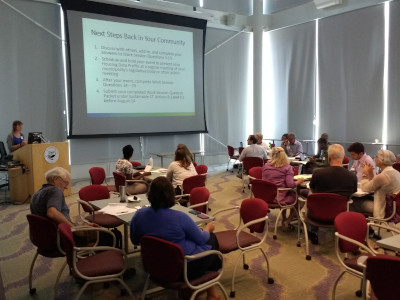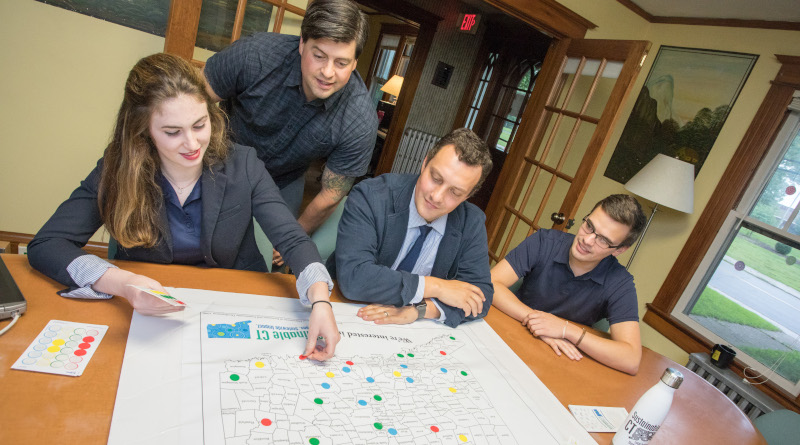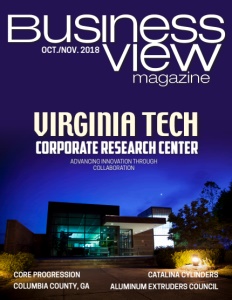Sustainable CT
Local actions – statewide impact
Business View Magazine interviews Lynn Stoddard of Sustainable CT, for our American Sustainability Series focusing on the State of Connecticut.
Sustainable CT is a voluntary certification program to recognize thriving and resilient Connecticut municipalities. An independently funded, grassroots, municipal effort, Sustainable CT provides a wide-ranging menu of best practices. Municipalities choose from a range of actions, implement them, and earn points toward certification.
 Sustainable CT was created by towns, for towns. Municipal leaders and residents from across the state, the Connecticut Conference of Municipalities, and people from key agencies, non-profits, and businesses, all partnered to develop the program during 2016 and 2017. Sustainable CT is proud to be a part of the National Network of Statewide-Local Sustainability Organizations (N2S2O) and to co-chair the Steering Committee.
Sustainable CT was created by towns, for towns. Municipal leaders and residents from across the state, the Connecticut Conference of Municipalities, and people from key agencies, non-profits, and businesses, all partnered to develop the program during 2016 and 2017. Sustainable CT is proud to be a part of the National Network of Statewide-Local Sustainability Organizations (N2S2O) and to co-chair the Steering Committee.
Lynn Stoddard is Executive Director of the Institute for Sustainable Energy at Eastern Connecticut State University. The Institute spearheaded and coordinated the development of Sustainable CT and administers the program and certification review, with generous support from the Emily Hall Tremaine Foundation, Hampshire Foundation, and Common Sense Fund.
In an interview with Business View Magazine, Stoddard speaks about the positive impact that Sustainable CT is having on Connecticut towns. The following is an edited transcript of that conversation.
BVM: How did Sustainable CT come about and how do communities engage in the program?
Stoddard: “Sustainable CT was launched in Nov. 2017, but we were in development for 18 months before that. A vision was set by many municipal leaders, elected officials, and other stakeholders throughout the state to create a program to accelerate, support, and recognize sustainable actions by Connecticut towns. Sustainable CT is a roadmap of best practices that towns can take to assist with liveability, resilience, efficiency, improving the local economy, arts and culture, transportation – sustainability defined very broadly.
“In addition, we provide resources – technical and financial support, tools, and partnership with experts – to help towns implement the actions. The third piece is recognition. Towns select the actions they want to take from the action menu, and earn points for successfully implementing each action. When they accumulate a certain threshold, they can apply for Sustainable CT certification. The deadline for submitting applications for certification in 2018 was August 24. At the end of October, we’ll celebrate the accomplishments of the certified towns at the Annual Convention of the Connecticut Conference of Municipalities, which is one of our core partners.”
BVM: Is there a cost for towns to participate?
Stoddard: “There is no cost. In fact, we give a lot of free support to towns when they join the program. In early 2019, we’ll launch a municipal grants program to help towns accomplish actions; right now, the support is in the form of free consulting services, workshops, and assistance from us and various partners for implementing actions.”
BVM: What is the primarily role of Sustainable CT?
Stoddard: “To sum it up, our role is supporting, accelerating, and recognizing sustainable actions by Connecticut towns. We feel that the local level is a very powerful place to create change. Sustainable CT supports our towns in becoming thriving , inclusive communities where people want to live, work, and play
“To get certified, a town must do one action in each of our nine categories, including transportation, local economies, planning and zoning, land preservation, arts and culture, housing, equitable community development, and natural resources. It’s broad, flexible, and all voluntary. Towns can get credit for actions they’ve taken before the program launched because we want to give them visibility as great examples.
“Most towns are creating a sustainability team to help implement the actions, to see if they already have points for any of those actions and to take advantage of the many resources. In many cases, these towns also have an economic development committee, maybe a solid waste committee, etc. and they’re saying that Sustainable CT is serving as a platform for uniting all their committees around a common framework. For example, the agriculture committee might be working on agriculture-friendly policies and that’s part of the Sustainable CT actions. And the economic development committee might be promoting buying from local businesses – that counts for points. It’s been really interesting to hear municipal leaders say it’s helped their towns coordinate different siloed committees.”
BVM: Does the program spur networking among different communities?
Stoddard: “That’s one of the founding principles of the program. We want to encourage multi-town collaboration and working regionally. Many of the actions are more effective if you work with multiple towns – like a watershed plan that extends beyond the town boundaries, and transportation initiatives. We’re encouraging towns to work together on implementation. Each town gets full points for the action even if it was completed by multiple towns.
“For instance: I had an email from a town that shares a regional middle school and high school. They both have solar panels and the town asked how that works for points? Three towns are attending the schools and they all contribute, based on student ratios. It’s a great example of solar in use on those schools – all the towns collaborated and will get full points. We think that towns learn best from each other.
“Our website is designed with a map of Connecticut that has dots for towns that have registered. Click on the dot for that town and you can see every action they’ve done and the materials they uploaded to substantiate that. Hartford, for example, created a Complete Streets policy. You can click on their city, read the policy, and see how Hartford has showcased what they’re doing. And other towns can learn and adapt it for their own use. So, peer learning is an important aspect of the program.”

BVM: How many towns are registered and how do you communicate with them?
Stoddard: “Of 169 municipalities in Connecticut, we have 63 registered. We involved over 200 stakeholders in creating the program, and once we launched, many of the co-creators were ready to adopt it. We have a small staff, but helping towns understand the program is a priority. So, if they ask us to come to a town council meeting or a sustainability team meeting, we go out directly and help them, one on one.
“When it comes to communication, obviously, there are a lot of emails and phone calls. The website is a major source of information, besides peer sharing and seeing what other towns are doing. The website has an interactive platform – once towns register, they create an account and have a municipal dashboard platform to log in what they’ve done.
“In May, we launched an exciting support effort called the Sustainable CT Fellowship Program and had a dozen students from colleges all over the state provide hands-on support to towns throughout the summer. They worked in our partners’ regional planning offices across Connecticut. That’s another way we communicate – interface and provide assistance through these young college students. We also have Yale University representation on our Board of Directors. And we’ve partnered with a group at the University of Connecticut that does training with municipal land use commissions. They have lots of great tools and we’ve been funneling their support through the Sustainable CT platform. In addition to universities, we have strong partnerships with the Connecticut Green Bank, the Partnership for Strong Communities, The Nature Conservancy, and others that provide assistance to towns that aligns with their mission and goals and with Sustainable CT.”
BVM: How do you help towns deal with sustainability challenges?
Stoddard: “Funding is a big challenge for towns, especially with a drop in state funding. Starting in 2019, we’ll have grants available to support local sustainability projects. For communities that want to engage in sustainability efforts and environmental stewardship but don’t know where to start, the roadmap of best practices we’ve created will be a huge help in moving Connecticut towns forward.
“Our Sustainable CT platform engages community spirit and involves people in community building when they might not have otherwise. If individuals want to get involved, we’ll match them up with the sustainability team in their community, so they can become active. If their town hasn’t signed up, we give them the tools and resources to reach out to their mayor and others to encourage the town to participate. We’re just getting started and realizing how rich these partnerships with universities and businesses and all the different sectors are, and how important. There are countless untapped opportunities we’ll be digging into as we move forward.”
Check out this handpicked feature on Nu Look Home Design – Capturing brand identity.
AT A GLANCE
WHO: Sustainable CT
WHAT: A sustainability certification program for Connecticut towns
WHERE: Office in Willimantic, CT
WEBSITE: www.sustainablect.org



